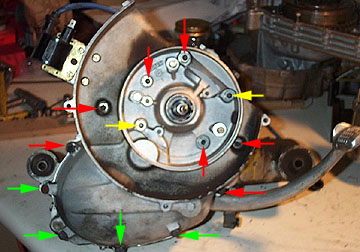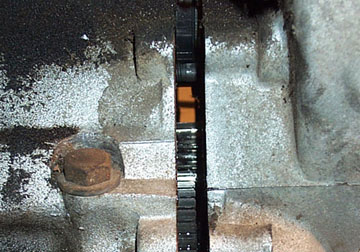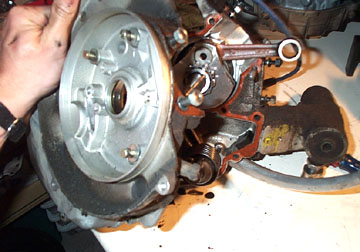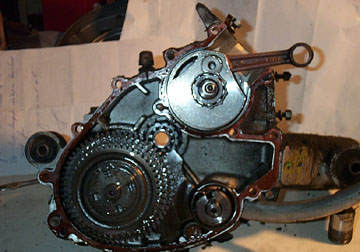 |
 |
 |
 |
 |
 |
 |
||||||||||||
Vespa Small Frame Engine WorkSplitting the Casings |
Engine Casing SplitSplitting the casings allows access to the crank, the oil seals, main bearings, and transmission components. There are only a few specialized tools required to do this on a small frame engine, although even these types of engines differ during the small frame model range. The Vespa 100 Sport engine below is shown out of the bike. If you need to remove the engine from the bike (here's a guide), and the flywheel, stator, and cylinder have been removed. A final step that is absolutley required is to remove the clutch or the casings cannot be separated.
The small frame bike has a series of 11mm casing nuts around the perimeter. Most of these pass through the casings and have special D shaped bolt heads so they don't rotate when loosened. The red arrows above show casing bolts with their thread facing towards you, the green arrows show bolts where the thread & nut are located on the other side of the casing, and the yellow arrows show studs that are set into the casing itself. The 100 Sport has a two piece flywheel side bearing so splitting the casings is pretty easy. Remove all the casing bolts and set them aside for the rebuild.
Then carefully start to pull the flywheel side caing away from the swing arm side of the casing. If the casings need a little encouragement you can softly tap with a ruubber faced mallet. The picture above shows the starting of the casings pulling apart from each other.
The shot above shows the flywheel side casing being lifted clear of the swingarm side and exposing the engine internals. Nothing should fall out of the casing during this process.
Now that the casings are removed, you will have access to the crankshaft, kickstart, and gearbox. |
|||||||||||||||||



